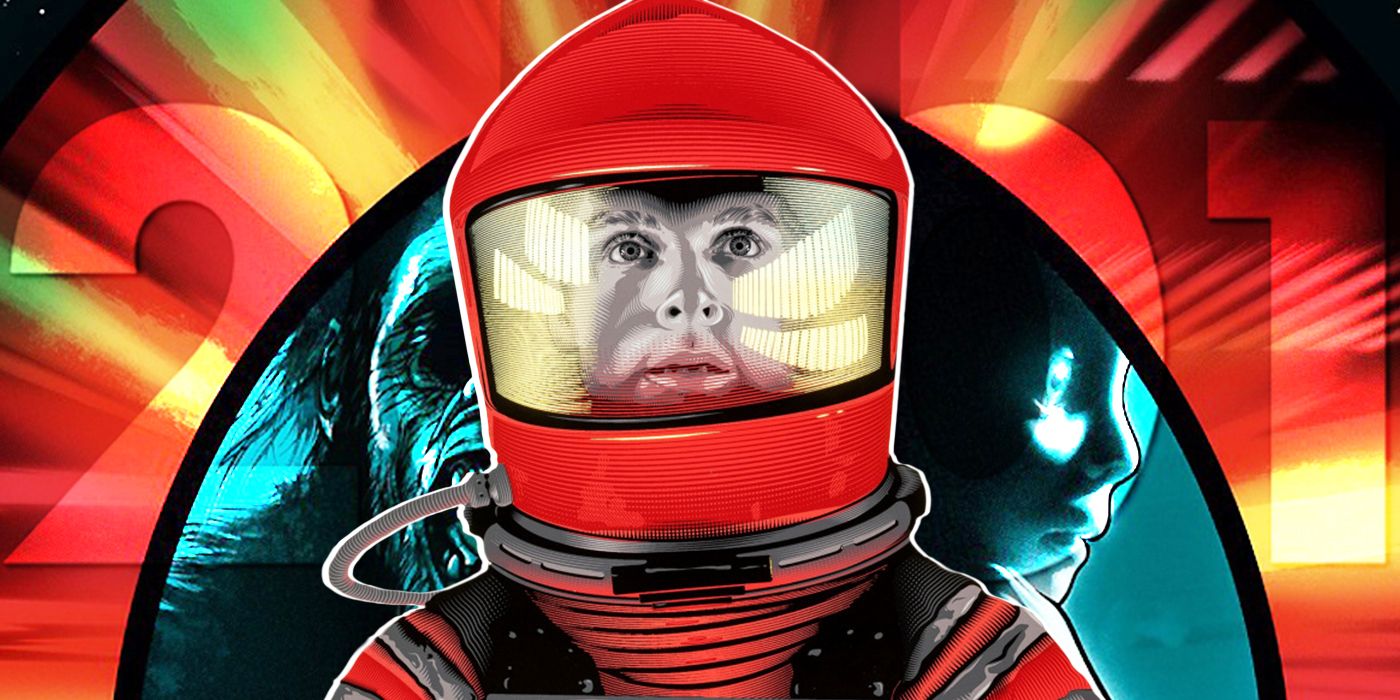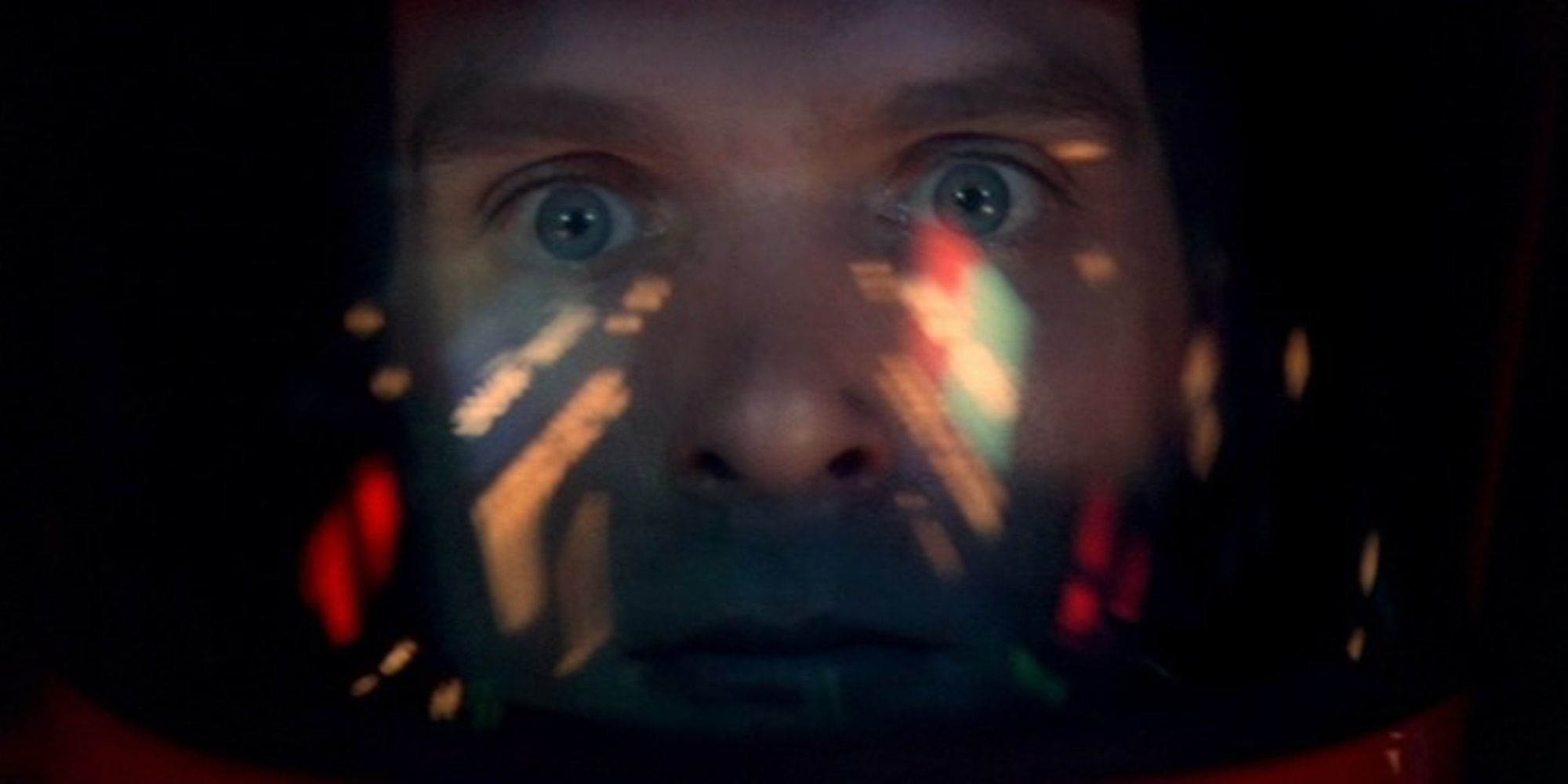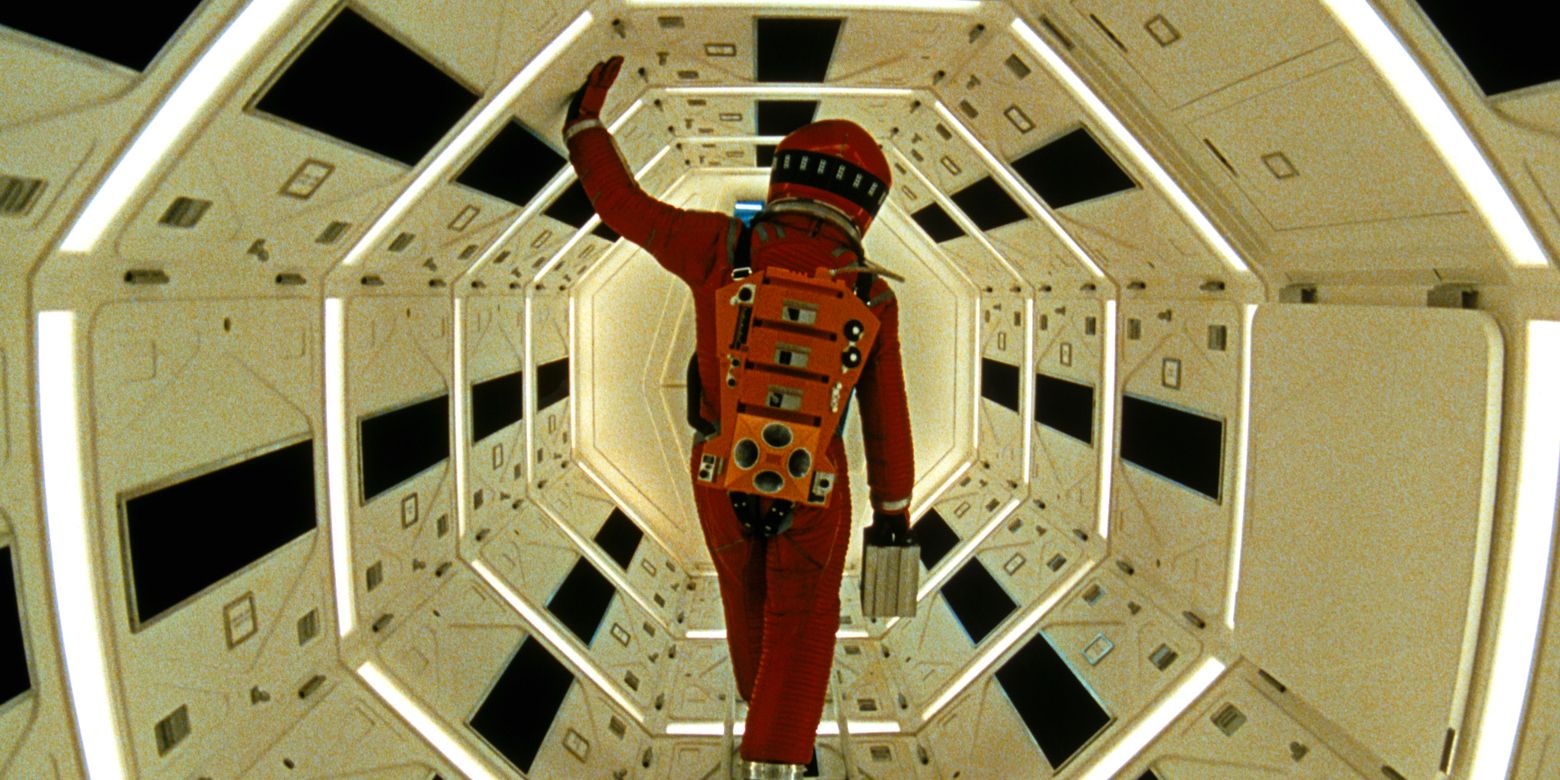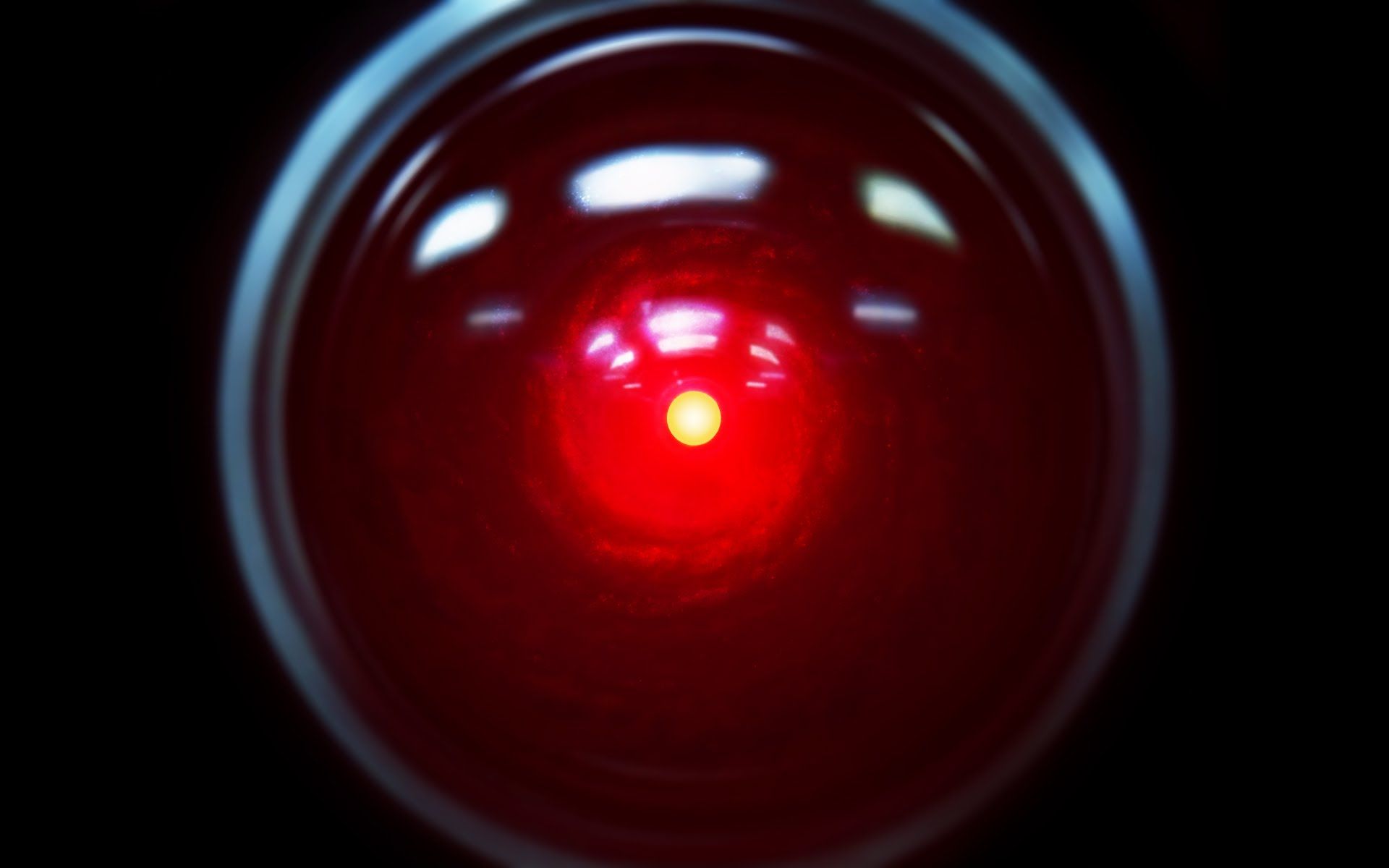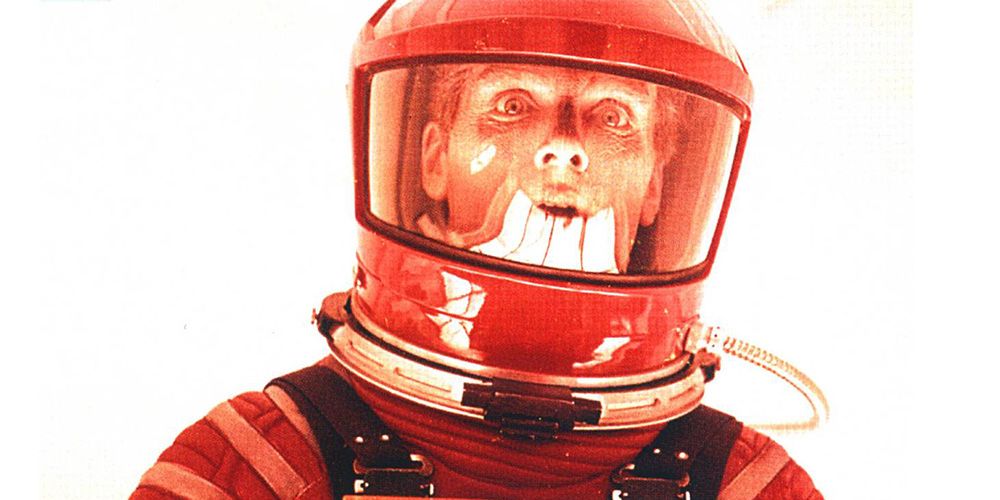There are few movies that are so good, they speak entirely for themselves. These are films that are timeless to their core and without any need for defense — The Godfather, Citizen Kane, The Shawshank Redemption, just to name a few. A film that should go without question as one of the most flawless pictures ever put to screen is Stanley Kubrick's 1968 sci-fi classic 2001: A Space Odyssey.
The film is one that transcends conventional, linear storytelling, opting for an experience almost primarily conveyed through sight and sound. There is a decent segment of the movie-going public that simply offer Space Odyssey a middling, sleepy thumbs up out of respect and call it a day. Many find the film to be overly long, boring, and pretentious. This take is, begrudgingly, somewhat understandable, as it honestly is not necessarily the most accessible movie ever made. It feels wrong to even think that it would need this, but this situation puts 2001 in the perfect position for a reexamination, a new light in hopes that more modern audiences might come to enjoy it more. With Halloween just around the corner, it's the perfect time to frame Kubrick's classic film for what it really is. 2001 is not the operatic science fiction epic that most moviegoers might expect, it is a cosmic horror nightmare about the endless vacuum of outer space, the nightmares of the unknown that will forever be beyond our understanding, and the terrors of our own manmade technology. The film is as ever present as its own mysterious monolith — one shaped by stories that came before and would go on to inform the works of many in the decades to come.
A Lovecraft Influence
Before 2001 came along, there had been several creators working in the landscape of cosmic horror. The early 20th century was a particularly important time for the genre as H.P. Lovecraft was molding many of its trademarks. Lovecraft was a short story writer who often conjured up tales of characters that came into contact with terrifying otherworldly beings. These were unfathomable beasts whose very existence would drive our leads mad after attempting to comprehend them. Lovecraft's stories were not immediate successes, but they would grow in popularity as the century went on and give the genre of cosmic horror the foundation it needed to grow.
Whether Kubrick or co-writer Arthur C. Clarke had read any Lovecraft before working on the film, their picture has many of the same trappings as the writer's works. The monolith itself is a cosmic horror idea that stacks up with any of Lovecraft's creations. Throughout the many periods that the film inhabits, several characters come in contact with the monolith, but never understand it. The audience is never given any explanation as to where it comes from, who made it, or if it is even an inorganic object. As the film moves through different periods in time, the monolith continues to be the piece that ties everything together. It shows that no matter how hard the film's leads tries to grow in their understanding of the universe, there will forever be things beyond their comprehension, much like many of Lovecraft's characters. It represents all that has existed before man and will remain present forever, forever a mystery. All that is certain is that whenever the monolith is on-screen, Kubrick proves himself as a master of terror.
Shades of 'The Shining'
It is understandable that many find The Shining to be Stanley Kubrick's first foray into horror filmmaking, yet the world would be remiss to overlook his work in 2001. Here is where Kubrick first had batting practice within the genre. The film is filled to the brim with unexplainable phenomena that leave plenty of room for the audience to work with, something the director would play with heavily in The Shining. The most terrifying moment in the film takes place after a group of astronauts has discovered a monolith in a crater on the moon. In their journey to study the object, Kubrick swells the film's terrifying soundtrack to an almost deafening degree, creating one of the most otherworldly atmospheres ever put to film. The scene is slow but in a way that works in its favor. As the astronauts approach the monolith, no one is speaking. In this moment, Kubrick lets the music do all the talking, allowing our minds to race in a desperation to predict what might happen when they reach the mysterious object.
This is horror filmmaking 101, a scene Kubrick essentially recreates in The Shining as Dick Hallorann makes his long journey back to the Overlook Hotel. While Kubrick does not employ the use of eerie music to help build the atmosphere, Hallorann’s journey is a lone one, one only accompanied by the sounds of quiet radio chatter and the crunching of a car’s tires driving over ice. Like 2001, this quiet, slow burn filmmaking leaves room for the audience to anticipate whatever sort of nightmare awaits Hallorann on the other side of his venture.
Upon broader inspection, there are a multitude of other ways that 2001 employs Kubrickian horror. It feels silly to water the entire universe down to a similar “location” like The Overlook Hotel, but it does act as the film’s main setting, as opposed to a single planet or a spaceship that the entire film takes place on. The vastness of space and time is Odyssey’s Overlook in the way that it continues to unveil glimpses at its secrets and mysteries to the audience. These glimpses are meant to baffle the viewer and move on without answers. Where 2001 presents the monolith and a kaleidoscopic portal leading to an interdimensional purgatory, The Shining offers a blood-filled elevator and Room 237. It is undeniable that The Shining is in the pantheon for the greatest horror movies of all time, but the secrets that the universe presents in Space Odyssey convey a horror so alien to humanity that the film ultimately has greater highs in horror. The sci-fi film’s chills do not only reside in the abstract, it also contains one of the greatest villains in the history of film. Aboard one of the many spaceships in the film is a figure much like Jack Torrance, one that snaps and threatens those around it — the HAL-9000 computer.
HAL — A Manmade Terror
HAL’s inclusion broadens 2001’s horror palette with the element of manmade terror. This stretch of the film involving the malicious artificial intelligence is a story straight out of The Twilight Zone. HAL is introduced as a highly versatile piece of machinery that is mostly in control of every bit of his ship’s operating systems. Eventually, he comes to threaten his human counterparts by manipulating the ship’s systems in order to avoid disconnection and carry out their mission in the way he best sees fit. His artificial nature makes him an impossible figure to reason with, leaving the crew only their wits in hopes that they might outsmart their adversary. This is where the film is at its quietest. Kubrick hardly employs any use of sound, evoking not only the silent nature of the spaceship’s corridors but also the lifeless atmosphere just beyond its walls. These scenes add an extra layer of horror on top of the film’s Lovecraftian elements, the same type of creeping intensity that is found with Jack Torrance. It is 2001’s cabin fever story in its cosmic isolation of the crew with HAL. For fans of Alien and The Thing, the inclusion of HAL brings the same sort of claustrophobic, paranoid atmosphere to Space Odyssey.
Inspiring Future Sci-Fi Horrors
When Stanley Kubrick’s film was released into the atmosphere, it was an instant game changer. 2001 not only revolutionized the special effects industry forever, it has proven to inspire generations of filmmakers across the world. Alex Garland is a recent example of a filmmaker who took notes from the film’s horror aspects. With his 2015 sci-fi thriller Ex-Machina, a malicious artificial intelligence named Ava outsmarts the inhabitants of a remote compound. The close-quartered, quiet nature of the film and tale of manmade technology backfiring is told in a Kubrickian manner that cannot deny its original influence.
Garland continues showing his love for 2001 in his sophomore effort Annihilation. The film follows a group of scientists that venture into a mysterious alien atmosphere, encountering several cosmic horror oddities. The film offers some explanations for its otherworldly elements but leave the same amount of ideas cold and open for interpretation. Without spoiling anything, the film contains a sequence that could rank second only to 2001’s acid-trip finale - a stretch so nightmarishly colorful and warped that it leaves viewers cold in a traumatized awe. Garland is living proof of Kubrick’s sci-fi horror influence.
Some classic films truly are overrated. Plenty of “great” movies are just a flat out slog to get through. It happens. But when a boring classic has enough reasons to justify a reassembly of its parts, why not open the door for conversation? This is not in agreement with 2001 being a total snooze fest, the film works on its own in being a Fantasia-like masterpiece in the marriage of film and music. It is a moving experience that, more than anything, serves no greater purpose than to prove the level of scope that films are capable of — a ballet that spans time and space. All this to say, 2001 needs no one to defend it; it’s one of the greatest movies ever made. This is like saying “water is wet."
All this to say, for those less interested in sensory filmmaking, give this one a shot as a horror film. No, there are no jump scares, no haunted houses, no college professors ready to explain any ancient evils — and that’s the best part. 2001: A Space Odyssey is the most effective kind of horror. It is the horror of what came before us and what will be here after we go: the incomprehensible secrets of our infinite universe.

